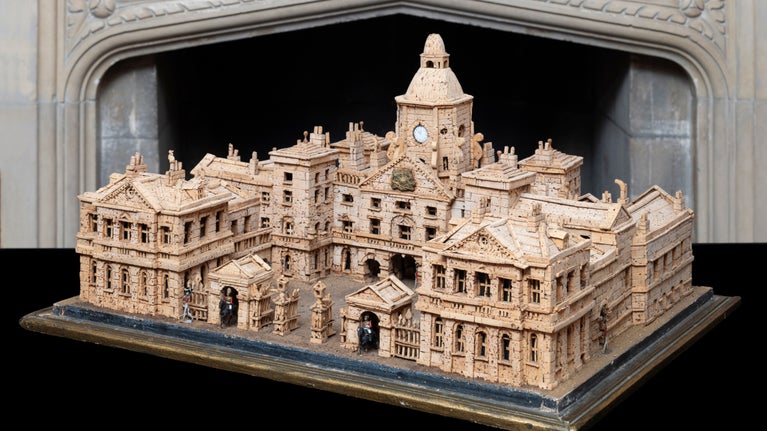
Art and collections
We care for one of the world's largest and most significant collections of art and heritage objects. Explore the highlights, our latest major exhibitions, curatorial research and more.

From 18th-century mini palaces to the house that inspired Beatrix Potter, the dolls’ houses at the places we look after are as varied as they are beautiful. Discover rare 18th-century pieces, famous dolls’ house owners, and places where you can find entire miniature collections. While these antiques can’t be played with, they do have some enchanting stories to tell.
The fashion for dolls' houses, or ‘baby houses’ as they were originally known, first began in Germany in the 16th century. Unlike today’s dolls’ houses, they were not simple child’s toys.
Their exact purpose is unclear, but the expensive craftsmanship and level of detail suggests these dolls’ houses were, at least in part, an ostentatious display of wealth. They were possibly also a way for young aristocratic women to learn the art of furnishing and running a home.
The earliest surviving example of a British dolls’ house dates to around 1695 and was reputedly bought by Queen Anne for her goddaughter.
While we don’t look after any dolls’ houses quite as old as Queen Anne’s, we do care for two rare 18th-century pieces at Nostell in West Yorkshire, and Uppark House in West Sussex. Only a handful of doll’s houses have survived from the 18th century, which makes these two quite special.
Beatrix Potter's dolls' house at Hill Top in Cumbria was the magical place that inspired The Tale of Two Bad Mice. Inside you can see furnishings and items used in the illustrations for the book, including the baby's cradle, the birdcage, the metal fireplace and the tiny set of plates and spoons.
Vivien Greene collected dolls' houses and wrote several books on their history. Saltram in Devon now cares for one of her houses, originally thought to be a miniature version of Whiteway House in Devon. The interior is fashionably furnished with fitted carpets, upholstered chairs and objets d'art, including a tiny working snow globe.
Why have one dolls’ house, when you could have a roomful? From Nunnington Hall’s collection of miniature rooms to an entire model village at Snowhill’s Manor, here’s where you’ll find collections of dolls’ houses all in one place.
The Victorian dolls’ house in the School Room at Calke Abbey comes with its own separate kitchen annex. It is furnished in the style of the period with a tiger-skin rug, piano, and even a miniature Noah's ark. Some of the furniture was made by children at the ragged school toy-maker’s workshop that Octavia Hill, co-founder of the National Trust, managed in the 1850s.
Explore items from Calke Abbey's dolls' house
Made in 1906 for six-year-old Mary Drewe, the sophisticated dolls’ house at Castle Drogo, Devon originally boasted working electric lights and running water, with a water tank located in the attic. The front and rear façades can be lowered and raised by turning a handle.
Learn about Castle Drogo's dolls' house
An early 18th-century oak cabinet in the nursery at Erddig, Wrexham, hides a miniature world. In the 19th century, windows were cut into its side and it was converted into a four-room dolls’ house. Some features replicate those of Erddig itself, such as the maxim ‘waste not, want not’ painted over the kitchen range.

We care for one of the world's largest and most significant collections of art and heritage objects. Explore the highlights, our latest major exhibitions, curatorial research and more.
We look after more than 27,000 pieces of dress, most belonging to the people who lived and worked in historic houses. From the luxurious to the everyday, explore highlights from the collections, which span over 500 years of changing tastes and fashions.

Explore a selection from more than half a million books and manuscripts in the collections we care for. Libraries Curator Tim Pye takes a closer look at some of the most significant works.

Discover highlights from our collection of around 75,000 ceramic objects, from an early Ming dynasty dish to an ancient Greek hydria.

From goldwork and gilding to goldsmithing and jewellery making, discover the ways in which gold has been used in the objects in our collections.
